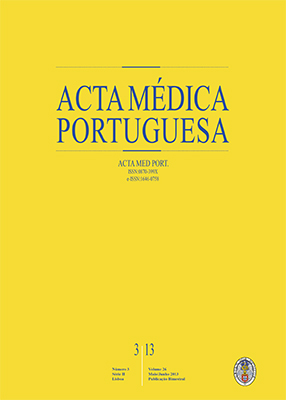Vertebral Metrics: Application of a New Mechanical Instrument to Evaluate the Spinal
DOI:
https://doi.org/10.20344/amp.4249Abstract
Objective: To present the results of the first application of the new technology - Vertebral Metrics - the analysis of the 3D position of the vertex of each spinous process in pregnant women.Material and Methods: The Vertebral Metrics was applied to women without associated pathology in four stages of pregnancy (12, 20, 32, 37 weeks gestation). We applied univariate linear models.
Results: We found that the differences that occur during pregnancy are more significant at the position y (anteroposterior). It was found
also that there is a positive correlation between the Biomechanical position of the vertex of each of the vertebrae with the homologous position of rest.
Discussion/Conclusion: Through Vertebral Metrics innovative results could be obtained in analyzing biomechanics of the spine. A device that has different applications can be easily adopted in areas such as orthopedics, neurosurgery, pediatrics and rehabilitation. It should also be noted that this instrument is not exhausted in the sample of this research because it can be further applied to the general population.
Downloads
Downloads
Published
How to Cite
Issue
Section
License
All the articles published in the AMP are open access and comply with the requirements of funding agencies or academic institutions. The AMP is governed by the terms of the Creative Commons ‘Attribution – Non-Commercial Use - (CC-BY-NC)’ license, regarding the use by third parties.
It is the author’s responsibility to obtain approval for the reproduction of figures, tables, etc. from other publications.
Upon acceptance of an article for publication, the authors will be asked to complete the ICMJE “Copyright Liability and Copyright Sharing Statement “(http://www.actamedicaportuguesa.com/info/AMP-NormasPublicacao.pdf) and the “Declaration of Potential Conflicts of Interest” (http:// www.icmje.org/conflicts-of-interest). An e-mail will be sent to the corresponding author to acknowledge receipt of the manuscript.
After publication, the authors are authorised to make their articles available in repositories of their institutions of origin, as long as they always mention where they were published and according to the Creative Commons license.









